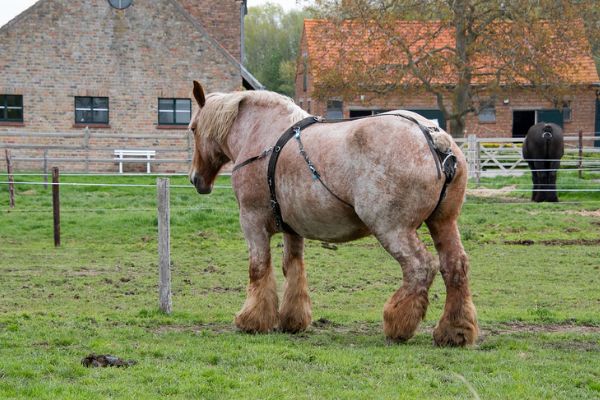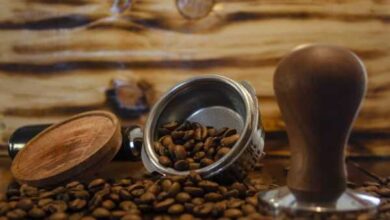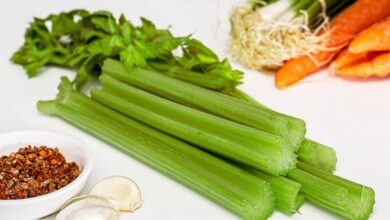Top 11 Largest Horse Breeds In The World

You will find plenty of horse breeds around the world. Horses have been domesticated for hundreds if not thousands of years, resulting in plenty of variation between various breeds. Some of these breeds are extremely small, however, others are substantial.
Majority of large horses are draft horses. In other words, they are bred to pull heavy equipment and supplies. The majority of them are not riding horses – they are too large. A number of these breeds remain used for pulling things even these days.
1. Shire Horse

The Shire horse is very easily the largest horse in the world. These things make some other horses look like dwarfs. They vary from 17 to 19 hands tall and can weigh up to 2,400 pounds. They were selectively bred to be large for farm and also industrial work. This led to the enormous size they’re these days.
In past times, this breed towed barges, pulled carts, and also handled heavy plows. They’re employed for both farm and industrial work.
But, because the majority of farms are mechanized nowadays, these horses are nearing extinction. Their numbers continuously lower, as many don’t prefer to keep large horses unless they have a practical necessity for them.
Multiple groups would like to revive this breed, however. Their numbers have gradually recovered, although they are still considered endangered nowadays.
2. Soviet Heavy Draft
As the name indicates, this horse was created in the Soviet era in Russia. This horse was originally derived from the Belgian Brabant and was created for agricultural work and heavy labor in the Soviet Union. It was recognized as a breed in 1952.
This is among many breeds that were almost all developed at the same time, like the Russian Heavy Draft, which is frequently confused with this horse.
The Soviet Heavy Draft is famous to be massive with a free-moving gait. They may have a straight or convex profile. Their neck is pretty short, while their torso is muscular and broad.
They were mainly used for draft work in agriculture, although they are often found in industrial work. They are also reliable producers of meat and milk, which they are used for in certain countries. The females have a lower fertility rate of only 65 %, although the foals are not hard to take care of and grow quickly. They have a good lactation rate.
3. Clydesdale

This horse is a bit better known than the Shire Horse. But, they are a bit smaller. They are somewhere in between 16 to 18 hands tall and weigh between 1,800 to 2,000 pounds. They may be larger, however.
The famous Budweiser Clydesdale horses tend to be at least 18 hands tall and weigh up to 2,300 pounds. King LeGear is probably the biggest Clydesdale around, standing at a high 20.5 hands tall. He weighed 2,950 pounds, which is bigger than the usual Shire Horse.
These horses are recognized for their energetic nature. They can be very gentle, but they are also rather excitable. They are used for agriculture, industrial, and forestry purposes which require strength.
They are in addition considered magnificent horses. They have white, feathered hooves that cause them to become very popular. They are usually in parades and as show horses because of their beauty. While they are prevalent, they are now at risk of extinction in certain countries. This is mainly owing to their large size, making them somewhat challenging to keep.
This is an old breed. There is no record of when the Clydesdale horse started. We all know they existed in the mid-18th century, as you will find records of them being imported to Scotland. Their definite ancestors include a Lampits mare and also a Thomson’s stallion. But, there are likely additional ancestors too.
4. Belgian Draft

The Belgian Draft didn’t develop as its unique breed until after World War II. The Belgian Draft is taller than almost all horses, however, it is also lighter. What this means is it can’t carry as heavy of a load as some other draft horses on this particular list, although it is still regarded as a heavy horse.
They normally weigh about 2,000 pounds and also stand around 16.5 hands tall. Because of their heavyweight, these horses can also be capable of pulling heavy loads. Two Belgian Drafts were registered to pull 17,000 pounds.
These days, these horses are most popular in serious farm work and forestry. But, they are still useful as riding horses. This is among the few draft breeds that are not on the edge of extinction.
They are generally shorter than many other draft breeds, however, this breed still has some really giant horses. The most familiar Belgian Draft was called Brooklyn Supreme. This horse stood 19.2 hands high and weighed more than 3,000 pounds.
5. Suffolk Punch
This horse breed is pretty old and fairly tall. They are probably the tallest horse in Britain, standing between 16.1 and 17.2 hands tall. They weigh about 2,000 pounds in most cases, although bigger horses are possible. These are still popular nowadays for forestry and also farm work. In addition, they do a lot in the advertising and marketing industry, thanks largely to their striking figure.
We don’t really know when this breed primarily came about. But, we have mentions that date back to 1586, therefore we all know the breed has changed very little since that time. This horse probably has close genetic ties with a few pony breeds, despite being massive.
This is among the rarer horse breeds on this list. They are ancient and also have reached a genetic bottleneck because of the massive losses during the world Wars. You can find few left in Britain today.
In America, the breed is a bit better off. Nevertheless, crossbreeding with Belgian Drafts is allowed in the United States, even though the British still do not allow this. Due to this, the British also do not permit crossbreeding with American Suffolk Punches.
6. Dutch Draft

The Dutch Draft is a more recent breed of horse. They didn’t appear till after World War I, in which Belgian and Ardennes Draft horses were generally bred together. This resulted in a complete new breed of horse – the Dutch Draft.
This breed is very heavyset. It became famous in Groningen and Zeeland, mainly for farm work and related heavy pulling jobs. But, it didn’t have much time to be well known until World War II, where it suffered heavy losses and grew to be a rarer breed.
This is very likely among the strongest horse breeds. They usually compete in horse-drawn plowing events, where they often win. Despite this, they are significantly smaller than several of the other draft horses. Mares tend to be around 15 hands tall and stallions are around 17 hands tall.
Nevertheless, they are much larger than many other breeds these days. They are not small horses by any ways.
7. Lithuanian Heavy Draught
This draught horse was developed during the 19th and 20th centuries. As the name indicates, they were created in Lithuania, where you will still primarily find them today. They are used most for heavy draft work, as you could possibly guess. But, they are often used for meat production too.
These days, the breed is near extinction. There were only 1,000 horses left less than twenty years ago.
This horse normally stands around 15 to 16 hands tall. They are not quite as large as various other breeds on this list, although they are still decently powerful. They are available in different colors also, grey, black, chestnut, including bay, and roan. They have strong, solid legs and are extremely muscular.
The Percheron is one other colossal horse. It comes from France, especially the Huisne river valley. This region was previously known in Perche, which is exactly where the breed gets its name from.
8. American Cream
The American Cream Draft may be the only draft horse developed in the United States that is still in existence. Most of the others are actually extinct. Even this horse is still a rare breed now.
They are best known for their gold champagne color, which in turn is where they get a part of their name from. This coloration is produced by putting a champagne gene in addition to a chestnut color gene. Because of this, this breed is available in both champagne gold and chestnut, based on whether or not the horse becomes the champagne gene. This breed generally only has amber eyes.
This breed primarily popped up in Iowa during the early 20th century. They started with a mare named Old Granny, who was a cream color. The breed struggled getting traction through the great Depression. But, some breeders worked to boost the breed, so the breed registry was created in 1944.
Since farming has become mechanized, this particular breed has fallen out of popularity. The registry started to be inactive for many decades. But, it was reactivated in 1982. The breed has been growing steadily since that time, though they are still thought to be critical.
9. Percheron

This kind of horse varies in size quite a bit. They can be between 15 to 19 hands tall, which is a major variety of sizes.
Even though they were recognized in France, their real history and development are unknown. They might be as old as 496 A.D.
This particular breed is unlike some other draft horses because Arabian and oriental horses heavily affect them. This extends back to the 8th century. The influence remained heavily until the 19th century. Due to this influence, this horse carries a lighter neck compared to various other breeds. But, it is still perfectly able to pulling heavy loads.
Back in the 19th century, this was a well-known coach horse. Nowadays, because coaches are hardly used, they’re generally used in horse shows, parades, as well as driving. They are still ready to perform forestry and also farm work as needed.
Unlike majority of draft horses, these in addition make good riding horses.
10. Australian Draught Horse
This horse breed is a giant conglomeration of some other horse breeds on this list. They are essentially a hybrid, with the genetics of Clydesdales, Shires, Percherons, in addition to Suffolk Punches all wrapped up in this one breed. They didn’t become their own breed until 1976 when they began their studbook.
As the name indicates, this horse was bred for Australia. To make the horse ideal for this country, many large horses were used. It is very likely that several of these horses were brought over with settlers, and after that crossbreeding began to happen. Ultimately, this led to a new breed.
This horse is well-known throughout Australia, where it is the dominant draft breed. Some are not registered, so the exact number of horses around nowadays is challenging to figure out.
This horse is actually large, although it is smaller than many of its ancestors. It can stand between 16.2 and 17.2 hands tall and weighs between 1,300 to 1,900 pounds. Bigger horses are suitable.
Even with their fairly smaller size, they are just as powerful as some of the other horses on this list. They are also really gentle and docile, making them very easy to work with. Many people claim they are pleasure to own.
11. Russian Heavy Draft/Ardennes
The Russian Heavy Draft is a Russian horse breed. It was bred initially in Imperial Russia during the second half of the 19th century. After the Russian revolution, it was renamed the Russian Ardennes. It is usually shortened to the “Ardennes.” This breed is among many draft breeds that were being developed at the time. But, it is an older breed on the whole and it is smaller than many other draft breeds around today.
This little horse is very powerful due to its size. In addition, it has a high milk production and it is often used in the production of kumis. In certain countries, the horse can also be raised for meat.




